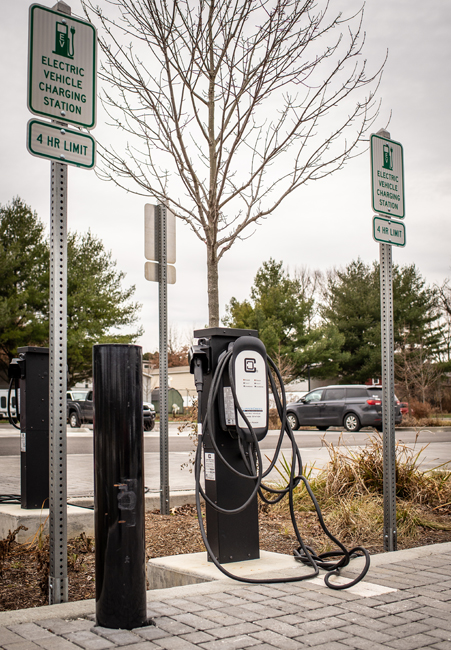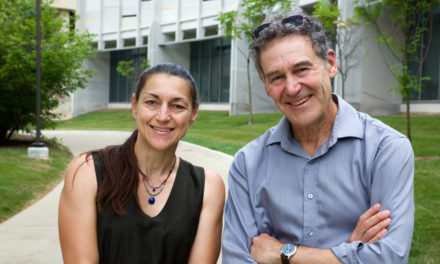
by CRAIG COLEY
Electric vehicle (EV) charging stations have begun to appear in parking lots around Bloomington, including four at Switchyard Park. While their availability outstrips demand at this point, planners want to create a climate that allows for EV use to grow.
“We don’t want to suppress demand and usage of electric vehicles by lacking the infrastructure,” says Alex Crowley, Bloomington’s director of economic and sustainable development. “But we also don’t want to be irresponsible with the investments and get too far ahead of the market.”
EV owners usually charge their cars at home. Travelers require other options, however, and publicly accessible units put Bloomington on the map when people plan trips. The Grant Street Inn installed a unit that charges Tesla cars in 2012. “Prior to COVID, it did draw some business for us,” says innkeeper Paul Wagoner. “Guests would book here specifically because we had the Tesla charger and they were coming through southern Indiana.”
The City has two charging stations in the Walnut Street parking garage and another two in the Morton Street garage. An $18,000 grant from the Indiana Department of Environmental Management is helping the City install 10 stations in the 4th Street and Trades District parking garages, which are currently under construction. Indiana University has 12 stations in campus parking lots. Travis Leake, facilities coordinator for traffic operations at IU, says these are primarily for faculty and staff who commute, but visitors use them as well.
EVs can be charged through a standard outlet, but slowly. Most public charging stations are Level Two chargers, providing about twice the electricity of a standard outlet. Level Two chargers can be installed at home, as well, and Hoosier Energy is promoting EV use by offering free Level Two chargers to customers who buy electric vehicles. Hoosier Energy is a Bloomington-based, nonprofit generation and transmission electric cooperative.
“We believe strongly in the EVs, not only because of their positive environmental impact, but the cost of ownership is about 50% less than an internal-combustion vehicle,” says Ryan Henderson, interim senior manager of emerging energy resources at Hoosier Energy.
Crowley says local demand for EVs is restrained because most of Indiana’s electricity comes from burning coal. Through solar panels on parking garage roofs, Crowley says, “we’re trying to source as much as we can from renewable energy.”









